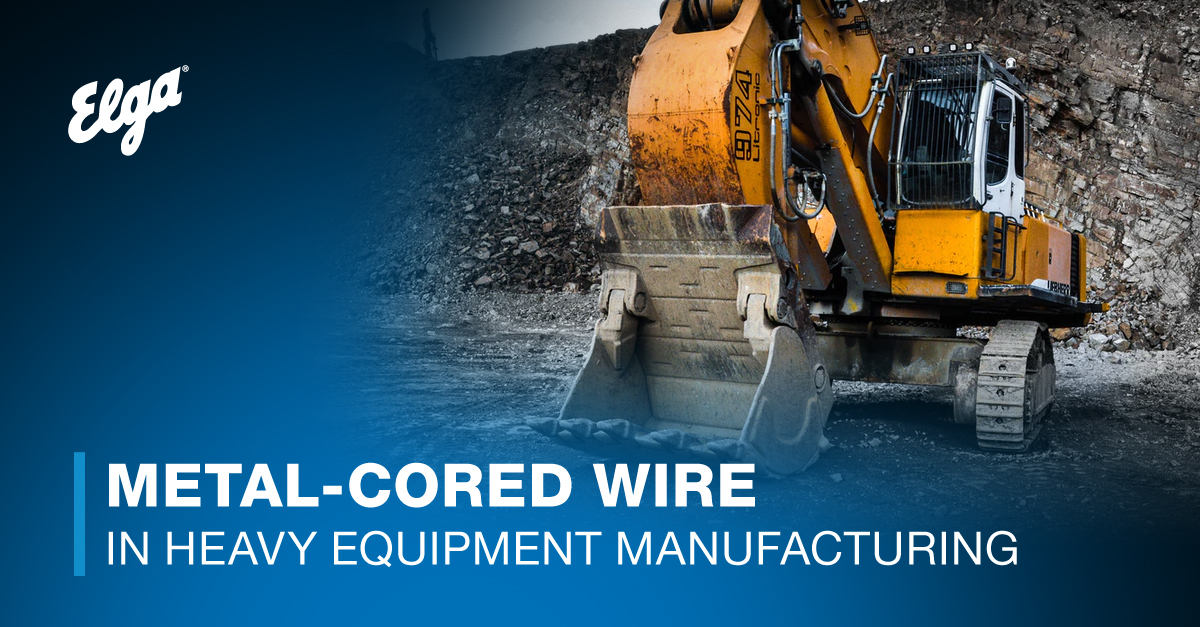While solid welding wire has been the status quo for heavy equipment manufacturing, switching to metal-cored wire can drive tangible cost savings.
Metal-cored wire offers several key benefits that help improve efficiencies compared to solid wire. These include:
-
-
- Greater tolerance to dirty base materials
- Higher deposition rates per a given heat input
- Increased travel speeds
- Improved bead profile
- Reduced distortion
- Lower spatter levels
- Better gap bridging
-
Because of these attributes, metal-cored wires offer distinct advantages in the pre-, weld and post-weld areas.
-
-
- Pre-weld, they reduce the need for cleaning of dirt, mill scale and rust on the base material, allowing parts to enter the weld cell directly from upstream. There is often no need for grinding or sandblasting beforehand.
- In the weld cell, they increase productivity by welding faster and laying down more weld metal. They also produce high weld quality that results in less rework.
- Post-weld, the wires reduce the need for grinding spatter.
-
- In the average semi-automatic welding operation, labor accounts for about 85% of the total costs. Reducing unnecessary activities helps make an operation more productive — and can have a substantial impact on the bottom line.

-
Metal-cored wire considerations
Heavy equipment manufacturing companies looking to convert to metal-cored wires should know some basics.
-
-
- Materials: Metal-cored wires easily weld the medium- and heavy-gauge carbon and low-alloy steels commonly used in heavy equipment manufacturing.
- Joints: The wires are usable for lap welds, fillet welds, T-joints and groove welds — typically, in flat and horizontal positions.
- Wire diameters: Common diameters of metal-cored wires are 1.2, 1.4 or 1.6 mm. Companies can often increase one diameter size (compared to solid wire) and still use similar welding parameters since the heat input is lower with metal-cored wires. The process can manage a larger wire and provide higher deposition rates.
- Weld length: Metal-cored wires provide better welding productivity in longer, continuous welds.
- Weld position: These wires are intended, and most productive, when welded in position, but they can be welded out of position using either a short-circuit transfer mode or a pulsed process.
- Technique: Metal-cored wires operate with comparable torch angles and contact-tip-to-work distances as solid wires. This allows welders to learn metal-cored welding with minimal training.
-
Article based on ITW Welding global experience and knowledge.
Tags: MATRIX, MCAW, MEGAFIL, Problem Solving, Welding
